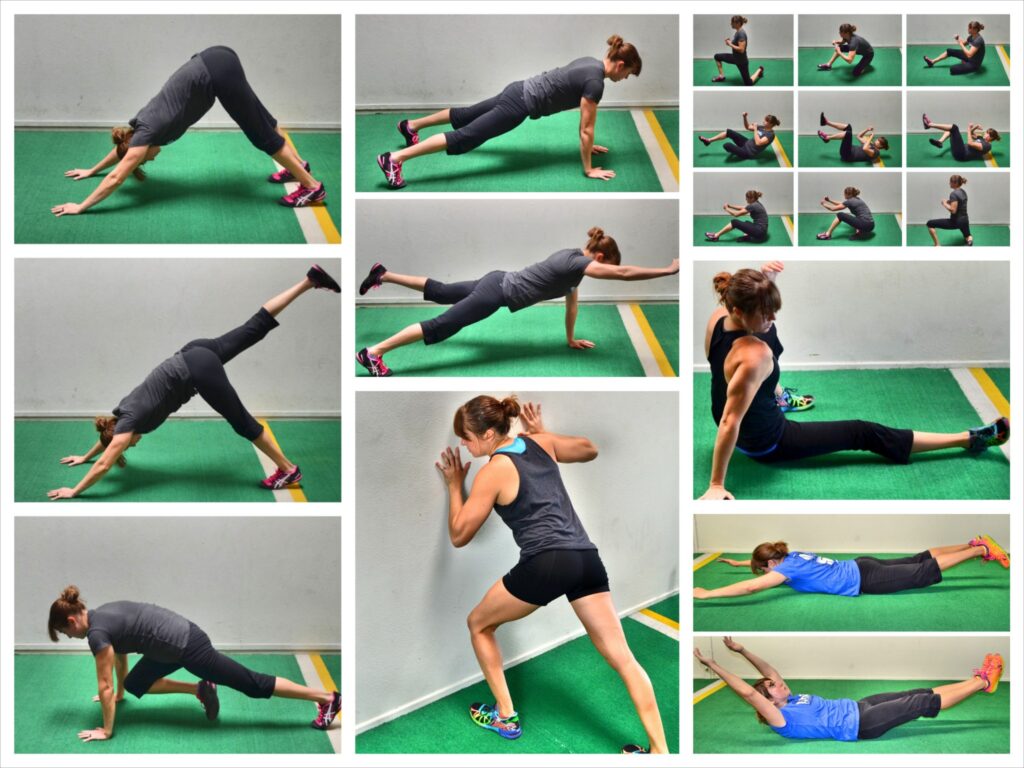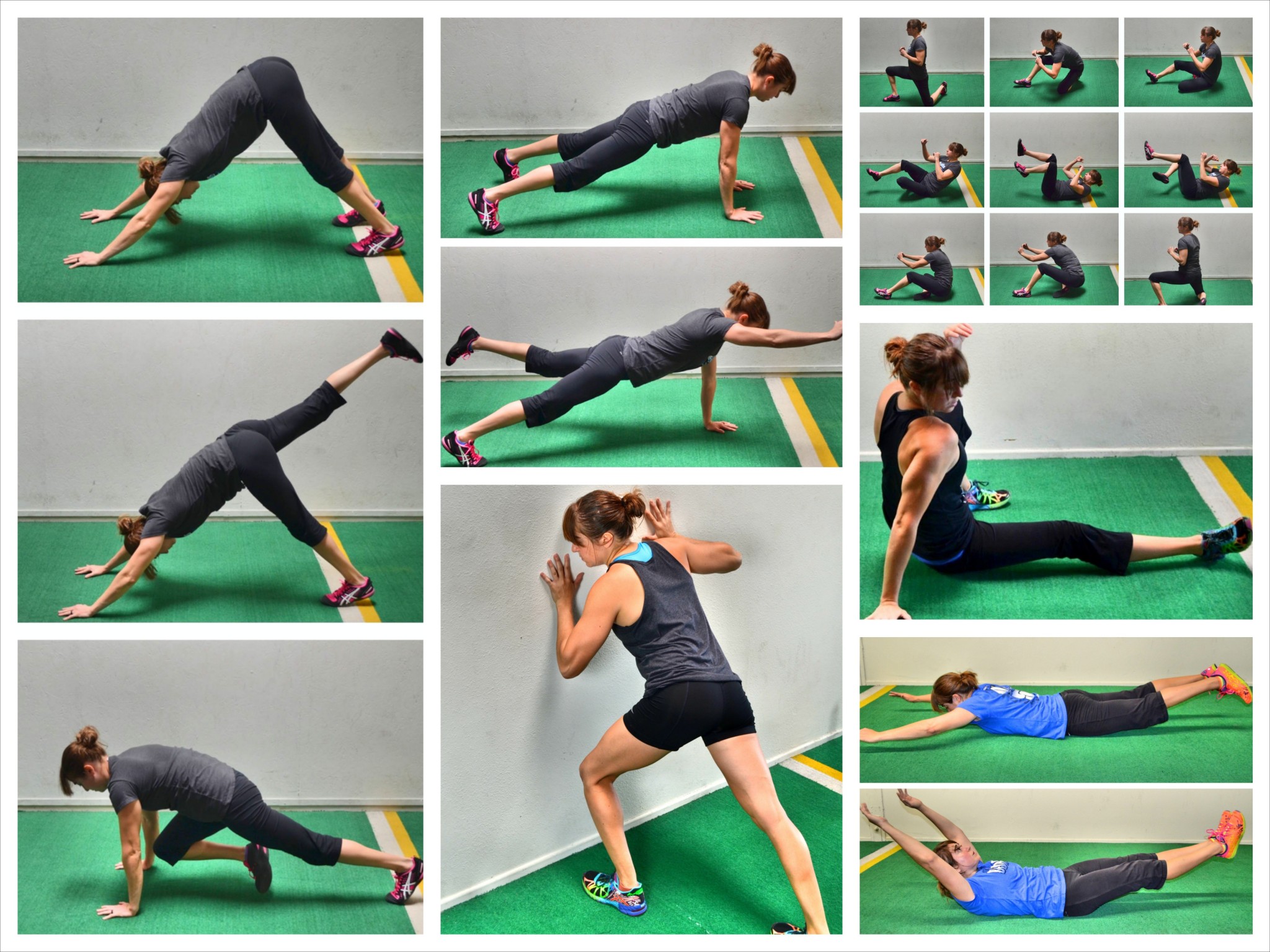
Introduction: The Power of Bodyweight Core Training
In the realm of fitness, the core often takes center stage. A strong core is not just about sculpted abs; it’s the foundation for overall strength, stability, and athletic performance. While gym equipment offers a plethora of options for core training, bodyweight exercises provide a convenient, effective, and accessible alternative. This comprehensive guide delves into the world of bodyweight core exercises, exploring their benefits, techniques, and providing a structured approach to building a resilient and powerful core.
Why Bodyweight Core Exercises?
Bodyweight core exercises offer several advantages over traditional weight-based training:
- Accessibility: No equipment needed! You can perform these exercises anywhere, anytime.
- Functional Strength: Bodyweight exercises mimic real-life movements, translating to improved functional strength and stability.
- Reduced Risk of Injury: Bodyweight training minimizes the risk of injury associated with heavy weights and improper form.
- Core Engagement: These exercises naturally engage the core muscles, promoting better posture and balance.
- Versatility: Bodyweight exercises can be modified to suit various fitness levels, making them suitable for beginners to advanced athletes.
Understanding Your Core: Anatomy and Function
Before diving into the exercises, it’s essential to understand the anatomy of the core and its functional role. The core encompasses more than just the abdominal muscles; it includes a network of muscles that stabilize the spine and pelvis:
- Rectus Abdominis: The “six-pack” muscle responsible for trunk flexion.
- Obliques (Internal and External): Muscles located on the sides of the abdomen, responsible for trunk rotation and lateral flexion.
- Transverse Abdominis: The deepest abdominal muscle, acting as a natural weight belt to stabilize the spine.
- Erector Spinae: Muscles running along the spine, responsible for back extension and posture.
- Multifidus: Small muscles that stabilize the vertebrae.
- Quadratus Lumborum (QL): Muscle located in the lower back, responsible for lateral flexion and hip stability.
- Glutes (Gluteus Maximus, Medius, and Minimus): While technically hip muscles, the glutes play a crucial role in core stability.
The core’s primary function is to stabilize the spine and pelvis, allowing for efficient and controlled movement. A strong core improves posture, balance, and athletic performance while reducing the risk of back pain and injuries.
The Best Bodyweight Core Exercises: A Comprehensive Guide
This section provides a detailed overview of effective bodyweight core exercises, categorized by muscle group and difficulty level.
Beginner-Friendly Core Exercises
These exercises are perfect for those new to core training or looking for a gentle way to build a foundation.
1. Plank
How to Perform:
- Start in a push-up position, but instead of placing your hands on the ground, rest on your forearms.
- Ensure your body forms a straight line from head to heels.
- Engage your core by drawing your belly button towards your spine.
- Hold the position for 30-60 seconds, gradually increasing the duration as you get stronger.
Muscles Targeted: Rectus abdominis, transverse abdominis, obliques, erector spinae.
Benefits: Improves core stability, posture, and overall strength.
2. Bird Dog
How to Perform:
- Start on your hands and knees, ensuring your wrists are under your shoulders and your knees are under your hips.
- Engage your core and maintain a neutral spine.
- Simultaneously extend your right arm forward and your left leg backward, keeping your body in a straight line.
- Hold the position for a few seconds, then slowly return to the starting position.
- Repeat on the opposite side.
Muscles Targeted: Erector spinae, multifidus, glutes, shoulders.
Benefits: Improves core stability, balance, and coordination.
3. Dead Bug
How to Perform:
- Lie on your back with your knees bent at a 90-degree angle and your arms extended towards the ceiling.
- Engage your core and press your lower back into the ground.
- Slowly lower your right arm towards the floor while simultaneously extending your left leg.
- Maintain contact between your lower back and the ground throughout the movement.
- Return to the starting position and repeat on the opposite side.
Muscles Targeted: Rectus abdominis, transverse abdominis, obliques.
Benefits: Improves core stability, coordination, and control.
Intermediate Core Exercises
Once you’ve mastered the beginner exercises, you can progress to these more challenging variations.
1. Side Plank
How to Perform:
- Lie on your side with your legs extended and your body in a straight line.
- Place your elbow directly under your shoulder and lift your hips off the ground.
- Engage your core and maintain a straight line from head to heels.
- Hold the position for 30-60 seconds, then repeat on the opposite side.
Muscles Targeted: Obliques, transverse abdominis, glutes.
Benefits: Improves lateral core stability and strengthens the obliques.
2. Russian Twist
How to Perform:
- Sit on the ground with your knees bent and your feet flat on the floor.
- Lean back slightly, engaging your core.
- Twist your torso from side to side, touching the ground with your hands on each side.
- For an added challenge, lift your feet off the ground.
Muscles Targeted: Obliques, rectus abdominis.
Benefits: Improves core rotation and strengthens the obliques.
3. Superman
How to Perform:
- Lie face down on the ground with your arms and legs extended.
- Engage your core and simultaneously lift your arms and legs off the ground.
- Hold the position for a few seconds, then slowly lower back down.
Muscles Targeted: Erector spinae, glutes, shoulders.
Benefits: Strengthens the back extensors and improves posture.
Advanced Core Exercises
These exercises require a high level of core strength and stability. Proceed with caution and proper form.
1. Dragon Flag
How to Perform:
- Lie on your back with your legs extended and your arms gripping a stable object behind your head.
- Engage your core and lift your entire body off the ground, forming a straight line from your shoulders to your heels.
- Slowly lower your body back down, maintaining control throughout the movement.
Muscles Targeted: Rectus abdominis, obliques, hip flexors.
Benefits: Develops exceptional core strength and control.
2. Hollow Body Hold
How to Perform:
- Lie on your back with your arms extended overhead and your legs extended.
- Engage your core and lift your shoulders and legs off the ground, forming a slight curve in your body.
- Maintain contact between your lower back and the ground throughout the hold.
- Hold the position for as long as possible, focusing on maintaining proper form.
Muscles Targeted: Rectus abdominis, transverse abdominis.
Benefits: Improves core stability and control, crucial for gymnastic movements.
3. L-Sit
How to Perform:
- Start in a seated position with your legs extended in front of you.
- Place your hands on the ground next to your hips, with your fingers pointing forward.
- Engage your core and lift your body off the ground, supporting yourself with your hands.
- Maintain a straight line from your shoulders to your feet, forming an “L” shape.
- Hold the position for as long as possible.
Muscles Targeted: Rectus abdominis, obliques, hip flexors, shoulders.
Benefits: Develops exceptional core strength and stability, improves shoulder strength.
Creating Your Bodyweight Core Workout
Now that you’re familiar with various bodyweight core exercises, it’s time to create a workout routine that suits your fitness level and goals. Here’s a sample workout plan:
Beginner Workout (2-3 times per week)
- Plank: 3 sets of 30-60 seconds hold
- Bird Dog: 3 sets of 10-12 repetitions per side
- Dead Bug: 3 sets of 10-12 repetitions per side
- Rest for 60 seconds between sets.
Intermediate Workout (3-4 times per week)
- Side Plank: 3 sets of 30-60 seconds hold per side
- Russian Twist: 3 sets of 15-20 repetitions per side
- Superman: 3 sets of 10-15 repetitions
- Plank: 3 sets of 60-90 seconds hold
- Rest for 45 seconds between sets.
Advanced Workout (3-5 times per week)
- Dragon Flag: 3 sets of as many repetitions as possible (AMRAP)
- Hollow Body Hold: 3 sets of 30-60 seconds hold
- L-Sit: 3 sets of as many repetitions as possible (AMRAP)
- Side Plank: 3 sets of 60-90 seconds hold per side
- Rest for 30 seconds between sets.
Tips for Maximizing Your Bodyweight Core Training
To get the most out of your bodyweight core workouts, consider these tips:
- Focus on Proper Form: Maintaining correct form is crucial to prevent injuries and maximize muscle activation. Watch videos, read instructions carefully, and consider working with a qualified trainer to ensure proper technique.
- Engage Your Core: Consciously engage your core muscles throughout each exercise. Imagine drawing your belly button towards your spine and tightening your abdominal muscles.
- Progress Gradually: Start with beginner exercises and gradually progress to more challenging variations as you get stronger. Don’t rush the process, and listen to your body.
- Consistency is Key: Aim to incorporate core exercises into your routine consistently, at least 2-3 times per week.
- Listen to Your Body: Pay attention to any pain or discomfort you experience during exercise. Stop if you feel any sharp or persistent pain.
- Combine with Other Exercises: Bodyweight core exercises are most effective when combined with other forms of exercise, such as cardiovascular training and strength training.
- Nutrition and Recovery: Support your core training with a healthy diet and adequate recovery. Fuel your body with nutrient-rich foods and allow sufficient time for rest and muscle repair.
Common Mistakes to Avoid
Avoiding these common mistakes will help you prevent injuries and maximize the effectiveness of your bodyweight core training:
- Arching Your Back: Avoid arching your back during exercises like the plank or Superman. Maintain a neutral spine and engage your core to prevent lower back pain.
- Holding Your Breath: Remember to breathe throughout each exercise. Holding your breath can increase blood pressure and reduce oxygen flow to your muscles.
- Rushing Through the Movements: Perform each exercise with control and focus. Avoid rushing through the movements, as this can compromise your form and reduce muscle activation.
- Ignoring Pain: Never ignore pain during exercise. If you experience any sharp or persistent pain, stop immediately and consult with a healthcare professional.
- Neglecting Other Muscle Groups: While core strength is important, it’s essential to train other muscle groups as well. A balanced workout routine will help you prevent muscle imbalances and improve overall fitness.
Conclusion: Embrace the Power of Bodyweight Core Exercises
Bodyweight core exercises are a powerful tool for building a strong, stable, and resilient core. They offer numerous benefits, including improved posture, balance, athletic performance, and reduced risk of injury. By incorporating these exercises into your routine and following the tips outlined in this guide, you can unlock your inner strength and achieve your fitness goals. Remember to focus on proper form, progress gradually, and listen to your body. Embrace the power of bodyweight core training and experience the transformative benefits for yourself!

